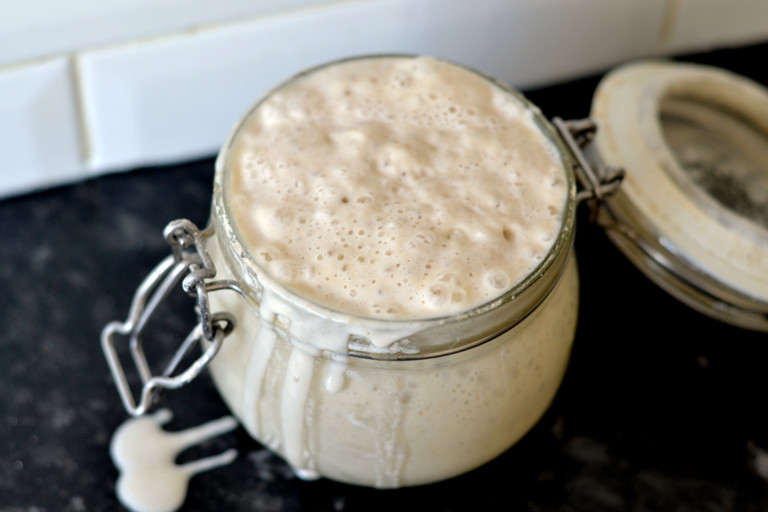Sourdough starter
- Other
- 1
- 15 minutes
This sourdough starter recipe will hopefully bring you boundless joy in the form of a lifetime of delicious bread – just make sure you remember to feed it. Although it may not hold the glamour of a fancy bit of kitchen kit or some pretty macarons, this will make a fantastic gift for the foodie in your life who wants to tackle the art of sourdough baking.
I wanted to begin this introduction with - ‘A sourdough starter is for life, not just for Christmas’ - borrowing of course from that well known and important slogan for buying and keeping pets. Yet there is slight problem, in that presenting a viscous pot of bubbling matter to say your children, nieces or nephews, is a far cry from opening a bow-tied box and watching soft ball of fur enthusiastically jump out. Coupled with a set of instructions that this ‘pet’ requires constant feeding and burping and a reminder that expenditure on flour (organic) may send your bills through the roof, will suddenly make the whole proposition unattractive at best.
But I really can’t start off with the adage from Battersea Dogs Home because, reader, I have neglected and killed many a sourdough starter off in the past. And there, I’ve said it.
God, I feel awful.
Actually, I haven’t really killed anything. The species of microbes or lactobacilli that exist as yeast, the wild fungus that float around us and magically transform flour, salt and water into tasty sourdough bread are extremely resilient. Veronica, for that is my sourdough starter’s name, has gone through many transitions and life-cycles. After a forgetful period in the fridge, she will often look quite sorry for herself; sat in the jar, with water separating and looking slightly grey. Or dead. But all it takes is a quick pouring off and good teaspoon of gloop, scooped from the bottom into another jar, some water and flour to feed and boom, we are soon off again.
Setting up your own ‘mother’ culture is quite straightforward. There are lots of methods, ranging from using grapes, crushed apples and leftover dough to kickstart things. But truly speaking, you just need a bit of time and patience and a quiet corner of the kitchen. Like I said, they are plenty of natural spores wandering around in the air and it is nice to know that what exists in your own environment, may differ from elsewhere. What I mean to say is that sourdough starters can vary from location to location. The flavour of your bread will be, quite subtly, unique to you.
As an idea for a gift, you may obviously want to give a jar to the food lover in your family or someone who has more than a passing interest in baking. Aunt Edith might be miffed that you haven’t given her the usual box of shortbread. But in giving a jar to the right person, you might just send them on a journey that will last a lifetime.
If you hear down the line, in say a month or so, that the son or daughter of Veronica (you can choose your own name by the way) has passed away, just tell them to revive with that teaspoon trick. And in future, tell them to keep the starter in the freezer in cryogenic suspension. After de-frosting, it will come back to life just as quick.
Ingredients
Metric
Imperial
Sourdough starter
- unbleached white flour
- water, tepid
Method
Get in touch
Please sign in or register to send a comment to Great British Chefs.


